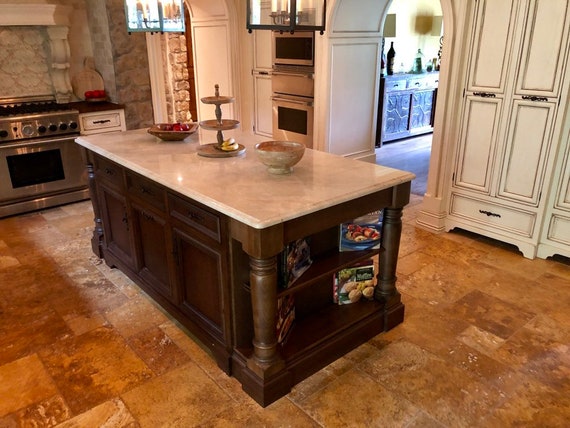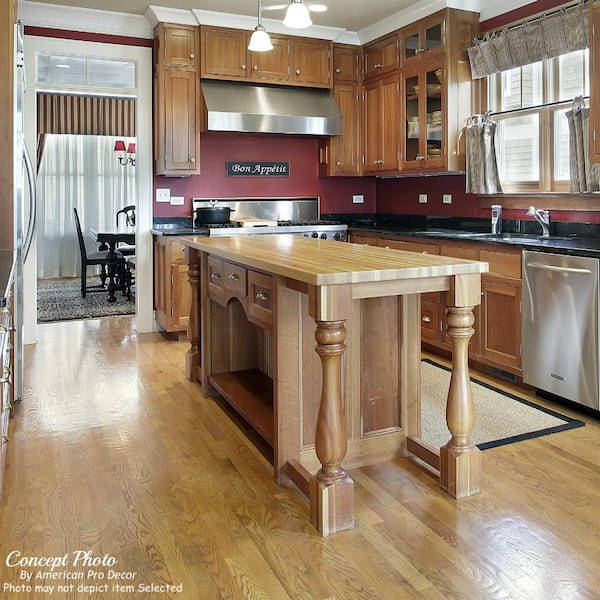The Top Kitchen Island Leg Styles to Complement Any Type Of Layout Aesthetic
The Top Kitchen Island Leg Styles to Complement Any Type Of Layout Aesthetic
Blog Article
The Importance of a Sturdy Kitchen Island Leg in Developing a Practical Food Preparation Location
A durable kitchen area island leg serves as a basic part in establishing a functional cooking environment, providing required support for both the countertop and numerous kitchen tasks. As kitchen areas progress right into multifunctional areas for cooking, eating, and mingling, the option of materials and style considerations for island legs ends up being increasingly crucial.
Advantages of Sturdy Island Legs
Giving important support, tough kitchen island legs play an essential role in improving the performance and resilience of kitchen area islands - kitchen island leg. These legs not only bear the weight of the kitchen counter and any type of added items positioned on the island, but also add to the overall stability of the structure. A well-supported cooking area island guarantees that it continues to be functional and upright, also under hefty usage, which is specifically essential in active cooking area environments
Moreover, strong island legs can enhance the visual allure of the cooking area. They give a strong structure that can enhance various style styles, from modern to conventional. This adaptability permits homeowners to tailor their cooking area islands according to personal preference while making certain that the architectural integrity stays uncompromised.
In addition to their encouraging duty, robust cooking area island legs can likewise boost safety. Eventually, investing in tough cooking area island legs is essential for a practical and visually pleasing cooking area.
Materials for Cooking Area Island Legs
When choosing materials for kitchen area island legs, longevity and aesthetic charm are vital aspects to think about,. One of the most common materials consist of wood, steel, and engineered wood, each offering unique benefits.
Wood, such as cherry, oak, or maple, is a timeless option due to its strength and ageless charm (kitchen island leg). It can endure significant weight and is immune to wear, making it excellent for high-use kitchen area atmospheres. Additionally, wood can be tarnished or repainted to match numerous kitchen styles
Metal legs, frequently crafted from stainless-steel or wrought iron, supply a contemporary and industrial look. They are extremely strong and can support significant lots while being resistant to wetness and warm, which is useful in a cooking location. Steel legs can additionally be quickly cleansed, improving their practicality.

Design Considerations for Stability
The option of products for kitchen area island legs directly influences the design factors to consider for stability. When creating a cooking area island, it is extremely important to review the weight-bearing ability of the chosen materials. Heavier materials, such as solid timber or steel, commonly provide higher stability, specifically under the tension of day-to-day usage.
Additionally, the leg style must include appropriate geometry to boost stability. A wider base raises the support location, lessening the threat of tipping or tottering. Consideration must likewise be provided to the height of the legs; disproportionate leg sizes can cause imbalance, endangering the overall stability of the island.
Moreover, the circulation of weight throughout the island is important. Making sure that the leg placement aligns with the heaviest elements, such as countertops and appliances, will certainly better boost Click Here stability.
Maintenance Tips for Durability

Cleaning is one more vital facet of upkeep. Depending on the material of the legs-- whether timber, steel, or composite-- suitable cleaning techniques need to be employed. For wooden legs, a gentle wipe with a moist fabric and an appropriate timber cleaner will certainly help maintain their coating. Steel legs might need a light polish to protect against corrosion and maintain their appeal.
Furthermore, tightening screws and bolts routinely can ensure security and avoid wobbling. If the cooking area island experiences heavy use, consider reinforcing the legs with added braces or supports to enhance longevity. Last but not least, applying a safety coating or sealant can guard versus wetness and discolorations, lengthening the life-span of the legs. By complying with these maintenance tips, property owners can ensure their kitchen area island legs stay durable and functional for several years ahead.
Picking the Right Leg Design
Regular upkeep makes certain that cooking area island legs continue to be useful and durable, yet picking the right leg design is just as vital for both appearances and support. The choice of leg design can substantially influence the general design and harmony of your cooking area.

Functionality is one more crucial element. Thicker legs or those with a strong base can support much heavier countertops and equipment, boosting the island's utility. Alternatively, slim legs might produce a ventilated look, appropriate for lighter designs but potentially much less helpful.
Conclusion
In summary, the importance of strong kitchen island legs can not be overemphasized in the development of a useful food preparation area. These legs give crucial support, boost security, and add to the overall aesthetic of the kitchen.
A sturdy kitchen area island leg offers as a fundamental component in establishing a useful cooking atmosphere, providing essential support for both the countertop and different kitchen area activities.Offering necessary support, sturdy cooking area island legs play a pivotal function in improving the functionality and resilience of cooking area islands. Inevitably, spending in tough kitchen island legs is necessary for a useful and visually pleasing cooking area.
Consideration needs to also be offered to the height of the legs; out of her comment is here proportion leg lengths can lead to imbalance, endangering the total stability of the island.
Wooden legs give heat and a traditional look, while metal legs provide a industrial and modern feel.
Report this page